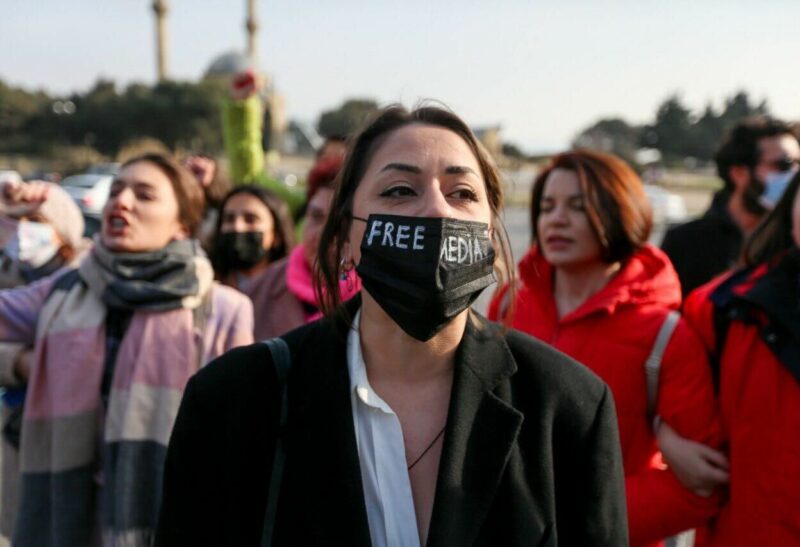The first week of December was not an easy one for oil producers.
After an agreement to impose quotas on oil extraction was concluded in Vienna on November 30, there arose the question of reducing production by countries that are not part of OPEC, without which the imposition of quotas would be pointless.
Many believed it unlikely that the non-OPEC countries would treat this with understanding. The reason for their doubts: the existence of disagreements in OPEC, the growing extraction of shale oil in the USA and Donald Trump’s plans to support American oil producers, and China’s plans to increase investment in the oil sector.
And, of course, there was no added optimism as a result of Saudi Arabia’s decision to make the greatest price reduction in the last year and a half on all types of its oil for the Asian market and for the second-greatest market for the Saudis – the USA. And that’s not even mentioning that Saudi Aramco is engaged in negotiations with Kuwait might, already in the first quarter of 2015, begin to develop new oil fields in the so-called ‘neutral zone’, which in total may yield up to 500,000 barrels per day.
Experts expected that the euphoria over the agreement would soon be extinguished, all the more because there is no certainty that the quotas will be adhered to. Regarding this question, 15 countries that are not part of OPEC were invited to Vienna on December 10, 2016: Russia, Brazil, Azerbaijan, Kazakhstan, Mexico, Oman, Turkmenistan, Egypt, Columbia, Bahrain, Brunei, Trinidad and Tobago, Congo, Bolivia and Uzbekistan.
In OPEC there was hope that they would reduce production in total by 600,000 barrels per day, but the participants of the meeting insisted on reduction of production by 562,000 barrels per day. This is not much, but all the same can be counted as a success. Especially if one takes into account that this is the first agreement since 2001 between OPEC and countries that are not part of the cartel. Clearly everyone realizes that further uncontrolled oil extraction and falling prices are a threat to all. And what’s more, representatives of an oil industry workers’ trade union in Nigeria began talking about a strike at all oil-production facilities in the country until the government raises wages and puts a stop to massive cutbacks in the sector. This will also reduce total extraction, if only for a time.
Behind all these machinations, one question remains unaddressed. How is it that all countries acknowledge the necessity of reducing oil extraction in order to increase its price, but are nevertheless investing money in the exploration and extraction of Caspian oil? It is believed that in terms of amounts of oil, the Caspian comes behind only the Middle-Eastern states and Russia; in terms of gas reserves, behind Russia, Qatar and Iran.
It goes without saying that for the developing and non-wealthy countries of the Caspian, the oil and gas sector is vital. But for developed, Western countries, it would be logical to want a freeze in oil extraction, which is what is being discussed at the OPEC meetings Nevertheless, in the past decades, we have seen a high tide of foreign investment, and not a small part of that in the Caspian’s oil and gas sector, though the production of oil in this region and its supply to users is a very complex affair. The oil fields of the Caspian are deeper than in countries of the Middle East, the majority of Azerbaijan’s proven and possible oil resources, as well as 30%-40% of the oil reserves of Kazakhstan and Turkmenistan are located in the sea at a distance from the shore, which complicates extraction. And then the legal status of the Caspian Sea is as yet undetermined. But all this doesn’t frighten investors, though extraction and transport of oil from the countries of the Middle East to Europe is significantly cheaper than from the Caspian, which neither now nor in the near future will be able to compete with the Persian Gulf.
To understand this, we need to take a short excursion into history. The start of commercial oil extraction is conventionally considered 1859, when the first oil well was drilled in Pennsylvania. By 1900, oil was already extracted in 11 countries and had overtaken coal, which until then had been the primary fuel for centuries. By 1973, oil had already become the basis of the world economy, and developed countries couldn’t get by without it. But it became the reason for numerous conflicts, both political and military. Demand for oil led to the movement of enormous sums of money from importing to exporting countries, whose total revenues grew from 20 to 140 billion dollars from 1972 to 1977. The countries of the Middle-East recognized that oil was a strategic commodity and decided to make use of this. For example when, under threat of sanctions, they demanded the USA stop supporting Israel. In 1973, Saudi Arabia ceased the supply of oil to the world markets, by which it provoked a global energy crisis. At the beginning of 1974, European society was forced to soften its position towards the Arabs in the Arab-Israeli conflict, and France, England and Japan distanced themselves from the USA’s policies in the Middle East.
In the context of oil conflicts, it’s fitting that we also recall Iraq’s attack on Iran in 1980, when Saddam Hussein attempted, admittedly unsuccessfully, to establish control over the oil-rich regions of Iran’s Khuzestan Province. There began a ‘tanker war’. Many countries were pulled into the conflict, since the entire system for provision of oil from the Persian Gulf was paralyzed.
The American fleet, stationed in the Persian Gulf, was joined by French, British and Soviet warships, in order to protect the caravans of vessels, not only including oil-tankers. The war continued for an entire eight years. As a result, Iranian and Iraqi export, if not being fully halted, were greatly reduced. By the way, this played a role in the warming between socialism and capitalism, since the West, striving to reduce its energy dependence on the Middle East, resorted to peaceful coexistence with the USSR.
When, in 1990, Iraq attacked Kuwait, the official reason for the incursion was Hussein’s suspicion that Kuwait was pumping oil from disputed, border oil fields. Baghdad demanded that Kuwait provide 2.4 billion dollars in compensation, write off debts incurred during the Iran-Iraq war (17 billion dollars), and direct access to the ports of the Persian Gulf. However, the global community came to Kuwait’s defense. A multi-national military command was created, and an air forces group of 20 strategic bombers, more than 1700 tactical aircraft, and up to 450 carrier-based aircraft. The land forces of the united Arab countries were concentrated in the north-eastern part of Saudi Arabia, along the border with Kuwait, Iraq and the neutral zone, and security forces guarded strategically important roads, seaports and oil-producing regions. Iraq created the southern grouping of forces, and the most battle-capable formations along the Euphrates River.
The oil market, deprived of Kuwait’s oil, reacted with a spike in prices, which lead to appreciation of almost all goods and services. The economies of many countries were in crisis. In government circles they began to talk about strategic reserves, energy security, and energy conservation, but after the military operation against Iraq was concluded, oil prices stabilized. However, it became clear that he USA was already unable to ensure Europe’s energy security – they themselves were, to a significant degree, dependent on Middle-Eastern oil, even more so because the countries of the Persian Gulf were already not so poor so as to recklessly increase oil production for the sake of income – they truly felt their economic power. And after the terrorist attack on New York on September 11, a new watershed boundary formed between the West and Arab, oil-producing countries, and the energy war grew from debates about ‘reasonable’ prices into something more.
The list of conflicts can be drawn out endlessly. But one way or another, the oil crises had devastating consequences, both for users and producers. And understanding took shape that we must avoid both sharp increases in oil prices, as well as dramatic collapses. In the last decade of the 20
th
century, the situation in the Middle East remained more or less calm, but there was nevertheless not peace there. In the Arab world there is not unity, and there is not stability in the Middle East. And that’s not even mentioning the war in Syria, which is capable of destabilizing the entire region.
Experts believe that OPEC, and before all else the countries of the Persian Gulf, control around 40% of the world oil trade, and might seriously influence the economy of Western countries. Guided by this, in 1974 the importing countries, united under the aegis of the International Energy Agency, renewed production at wells that had formerly been closed as unprofitable, introduced new technologies for searching out oil fields and for deep drilling, and expanded the geographical expanse of exploratory drilling outside the boundaries of OPEC. As a result, oil fields were opened in Mexico, Alaska, and the North Sea, oil processing technology was improved, and there were successes in the development of alternative energy sources. In this way the West managed to achieve two strategic objectives: reducing the role of oil in energy as a whole, and weakening the influence of the Middle-Eastern countries in OPEC and on the oil market.
Clearly in the context of these policies, the West views the Caspian as a competitor for the Persian Gulf, which might, in the case of necessity, reduce pressure from the primary oil producers – Russia and OPEC. Correspondingly, the Caspian resources can be viewed as a lever for control over the world energy balance and an alternative to oil sources in the Persian Gulf.
An important lesson can be drawn from all of this – not only does the market need oil, but a stable market is necessary for oil, and only policies founded on taking into account the linear and inverse relationships between the production of oil and the market can become a guarantee of economic growth. Can major oil players can find a balance between all these multi-directional interests or will oil continue to be a source of conflict in the future, so long as it exists? The future will tell.



